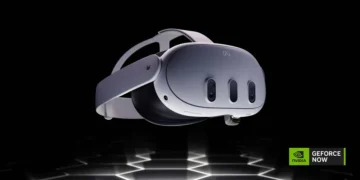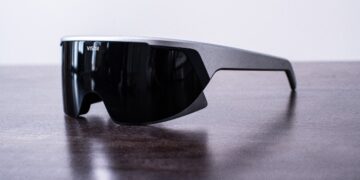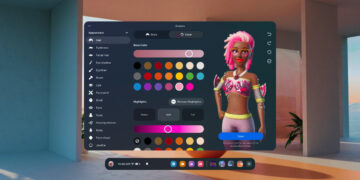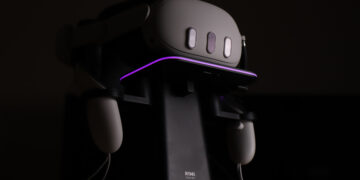Meta’s CTO: “We are gonna have probably the world’s most advanced pair of glasses this year, but it’s internal only”
In a recent Instagram AMA, Meta’s CTO, Andrew Bosworth, was asked about the progress on smart glasses and AR Glasses with a heads-up display (HUD). He responded:
Well, a heads-up display [HUD] is a very specific concept of what a screen could look like in glasses. And insofar as it’s really interpreting the world in real-time and processing things around it, that’s probably further out on the processing side. On the display side, yeah, we are gonna have, I stand by it, probably the world’s most advanced pair of glasses this year, but it’s internal only. We’ll have quite a few of them, but they’re not economically viable for large scale production and distribution yet.
So it’s a bit of a time machine for us to look into the future so we can build and design for the future. We’re certainly working on a glasses that have displays at multiple levels, smart glasses, all the way up to full AR glasses, but I don’t have a timeline to share right now.

What is Meta’s plan for AR Glasses?
As Andrew Bosworth mentioned, their upcoming AR Glasses, slated for release this year, are designed for internal testing and demonstrations. They’ll aid in research and serve as a “time machine into the future”. Codenamed “Project Orion,” Meta plans to manufacture 1,000 units of these AR glasses, significantly fewer than the initially planned 50,000. This reduction is due to the use of costly and uncommon components like micro-LED screens and silicon carbide waveguides, necessary for achieving a high field of view of 70°, (high when compared to other AR Glasses.)
The 50,000 units originally planned for Project Orion have reportedly been reallocated to Meta’s first “consumer” AR Glasses, code-named ‘Artemis’, slated for a 2027 release. These glasses will feature LCoS displays and a 50° field of view. Both Project Artemis and Orion will be 6-DoF AR Glasses accompanied by a wireless compute puck, but Orion will include depth sensors on the wireless puck to enhance environment understanding for more complex tasks.
Will Meta’s Project Artemis be a consumer product with a such limited unit count? Well, considering it’s the first generation of such a device, we can anticipate it being expensive, with limited functionality and features, and possibly restricted to the U.S. market only.

What will definitely be a consumer product is Meta’s Ray-Ban Glasses featuring a “viewfinder” display, scheduled to launch in 2025. These glasses will include a heads-up display (HUD), which Andrew Bosworth referred to when discussing Meta’s smart glasses development. He mentioned, “We’re certainly working on glasses that have displays at multiple levels, smart glasses, all the way up to full AR glasses, but I don’t have a timeline to share right now.” This indicates ongoing development within Meta’s labs and eventual release plans. According to Meta’s leaked product roadmap by The Verge, the company aims to introduce a third-generation of Ray-Ban Smartglasses with a display and neural interface in 2025.
We’ve compiled a detailed overview of Meta’s leaked plans for AR Glasses and Smartglasses over the next few years. If you’re curious to learn more, you can find the summary here.



































